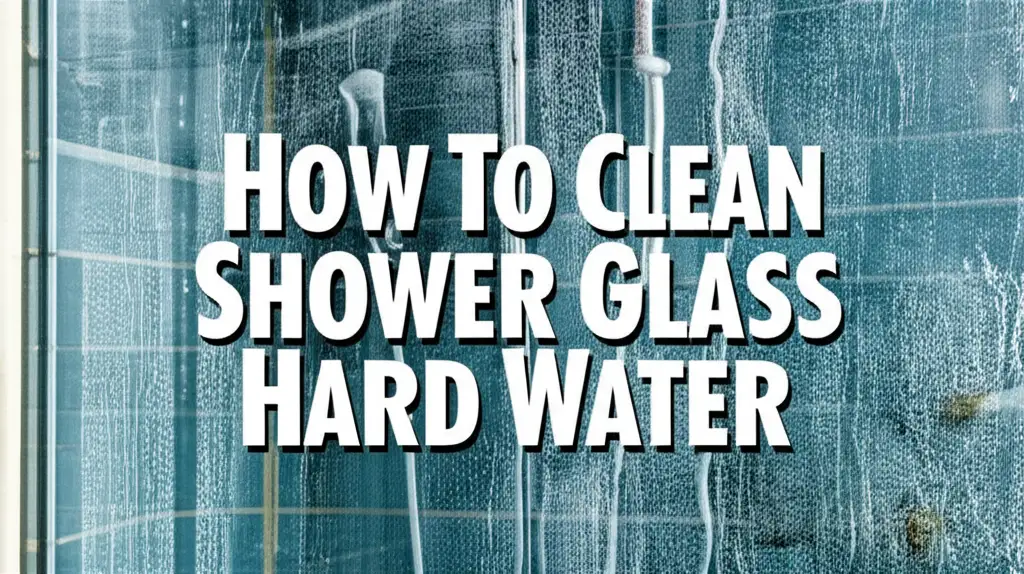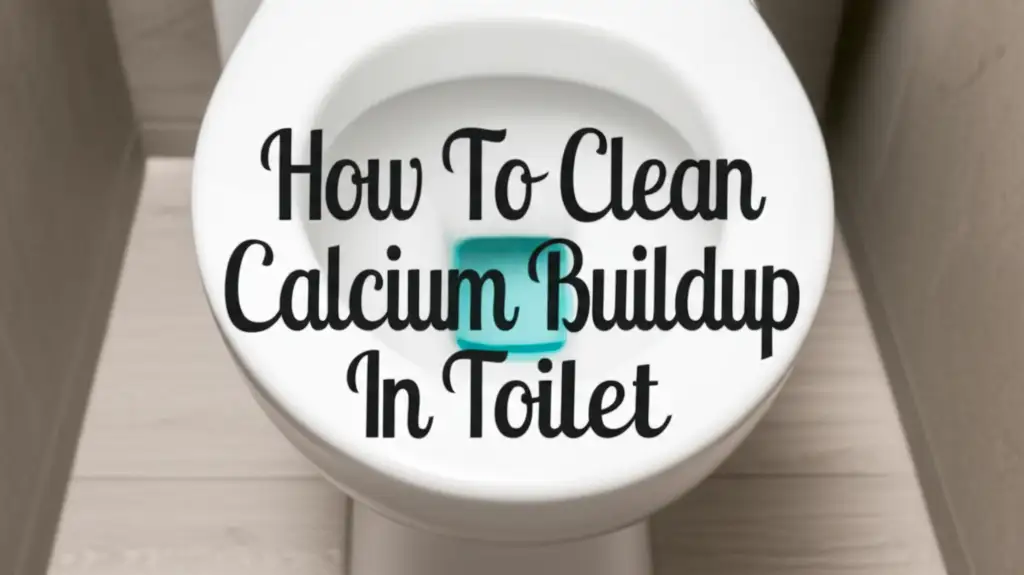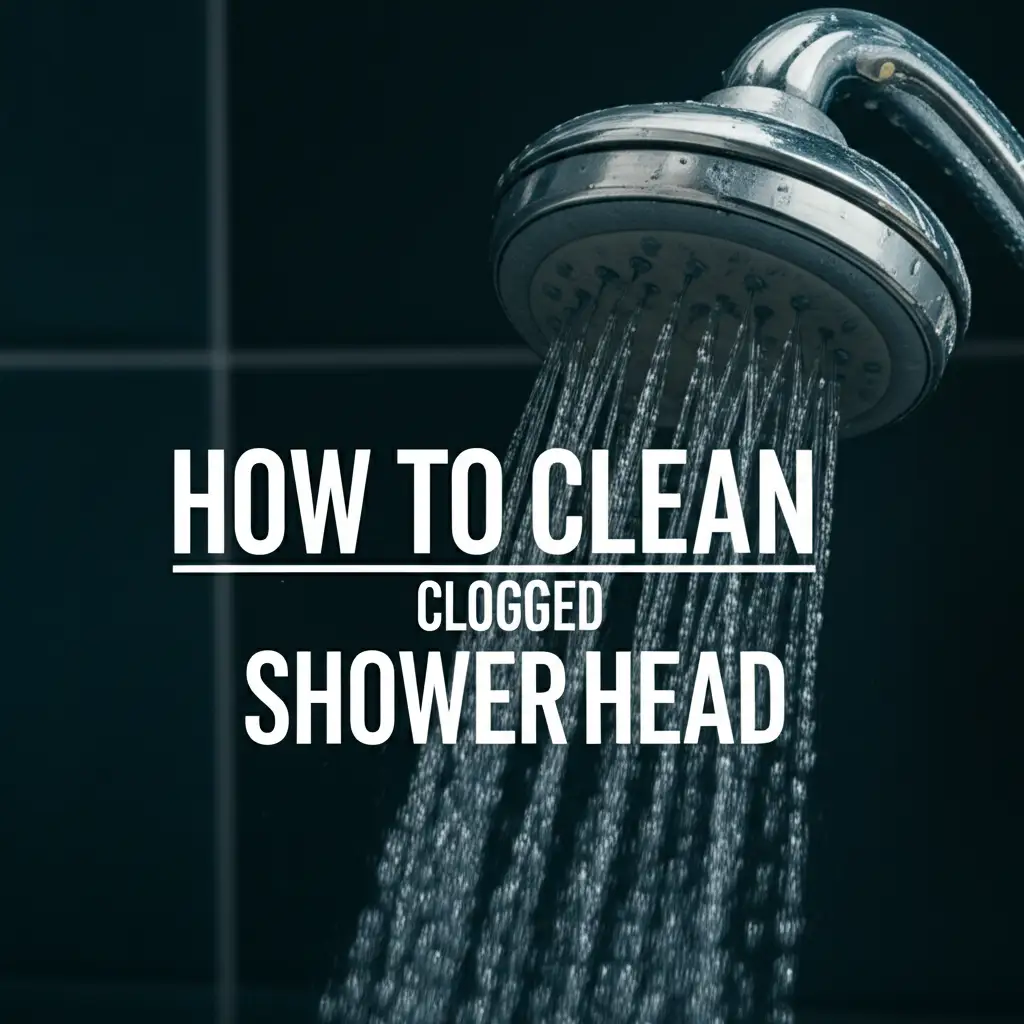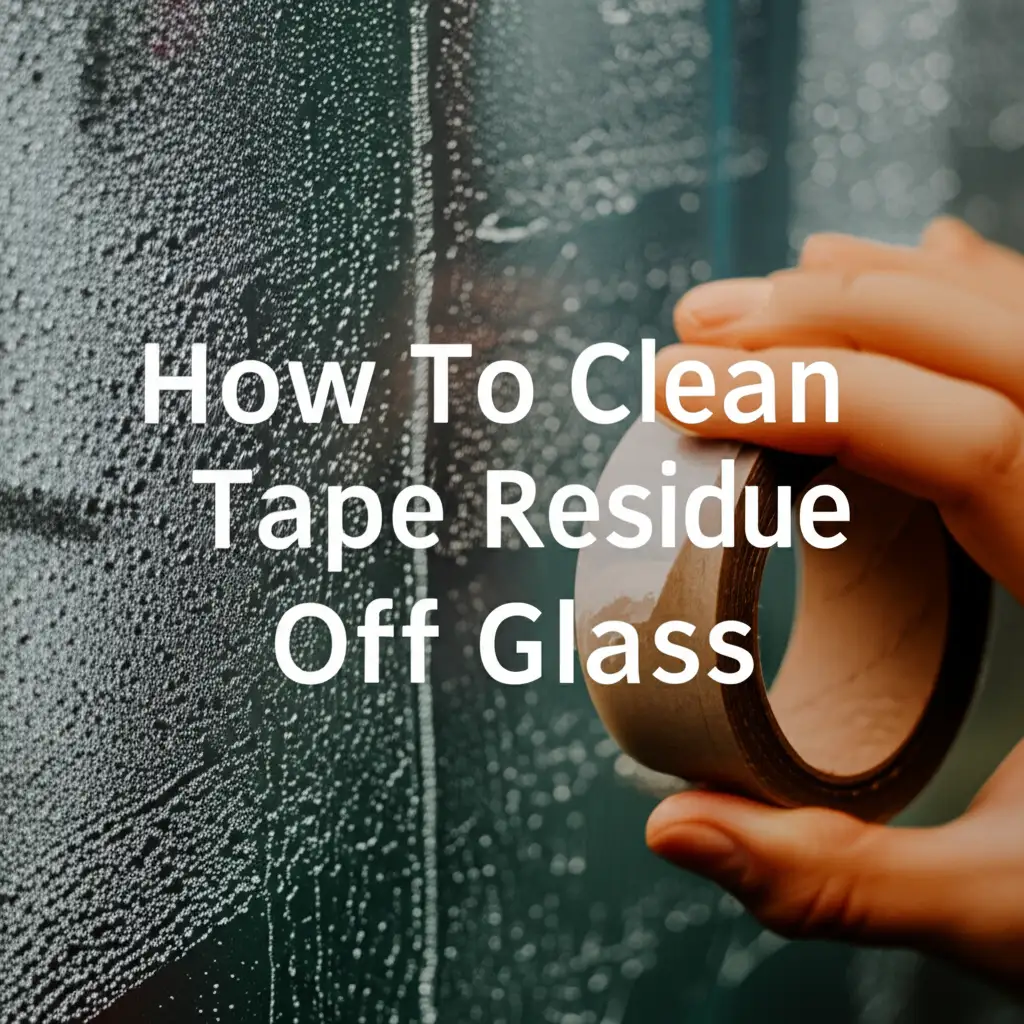· Home Cleaning · 19 min read
How To Clean Pop Up Drain
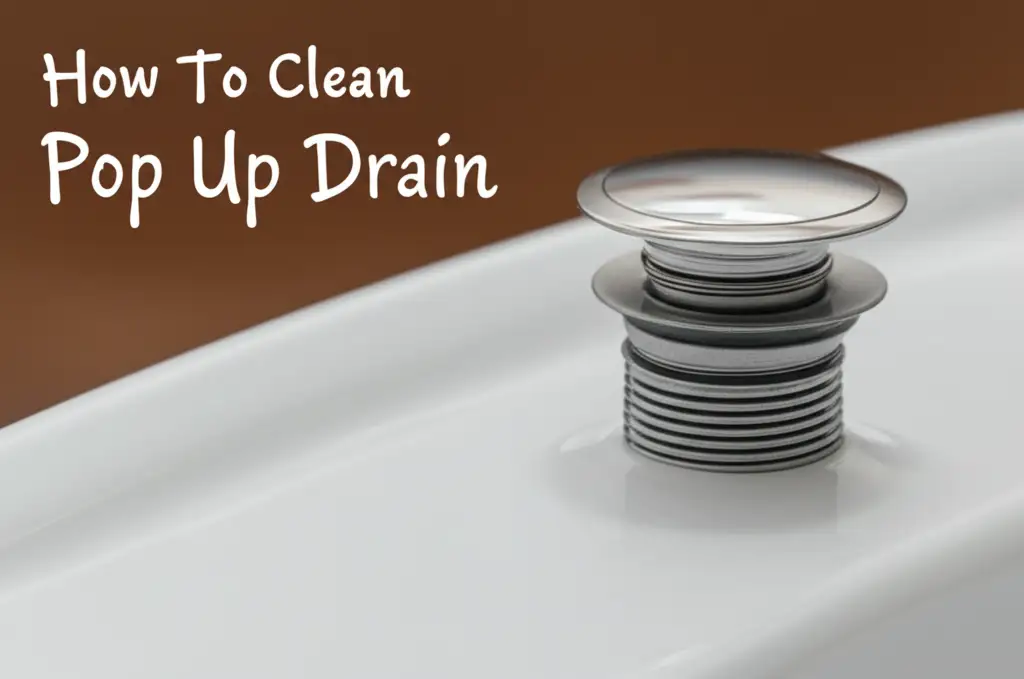
Effortlessly Clean Your Pop-Up Drain: A Simple Guide
Is your bathroom sink draining slowly? Do you notice unpleasant odors coming from the drain? The culprit is likely a dirty pop-up drain. Over time, hair, soap scum, toothpaste, and other debris build up around the stopper and inside the drainpipe. This accumulation causes frustrating clogs and creates a breeding ground for bacteria, leading to foul smells. I understand how annoying a slow drain can be.
Cleaning your pop-up drain is a simple task. It does not require special plumbing skills. Regular cleaning ensures your sink drains properly. It also keeps your bathroom fresh. This comprehensive guide will show you how to clean your pop-up drain. We cover everything from gathering tools to preventing future clogs. You will learn the easiest methods. Get ready to enjoy a perfectly functioning, clean sink.
Takeaway:
- Remove the pop-up stopper regularly for cleaning.
- Use simple household items like baking soda and vinegar for clogs.
- A drain snake helps clear deeper blockages.
- Implement preventive measures to keep drains clear.
To clean a pop-up drain, first remove the stopper by detaching the pivot rod or unscrewing it. Then, clear all visible hair and grime from the stopper and the drain opening. For deeper clogs, use a baking soda and vinegar solution or a drain snake. Reassemble the drain once clean.
Why Your Pop-Up Drain Needs Regular Cleaning
A pop-up drain is very common in bathroom sinks. It allows you to open or close the drain with a simple lever. This convenience comes with a downside. The mechanism traps debris easily. Hair, soap scum, and grime collect around the stopper and the pivot rod. This buildup happens slowly over time. It creates a perfect environment for clogs and odors.
Neglecting your pop-up drain leads to several problems. A slow drain is the most obvious issue. Water backs up in the sink. This makes simple tasks like washing hands frustrating. Beyond slow drainage, a dirty drain often smells bad. The decaying organic matter, like hair and soap, produces unpleasant odors. These smells can fill your bathroom. Regular cleaning prevents these common issues. It keeps your sink working well.
Common Culprits: Hair, Soap Scum, and Grime
Hair is the primary enemy of a clean pop-up drain. Every time you brush your hair or wash your face, strands go down the drain. These strands intertwine and form a mat. This mat traps other debris. Soap scum adds to the problem. It is a sticky residue from soap, shampoo, and conditioner. Soap scum clings to the hair and drain walls. It makes the clog even thicker.
Toothpaste and other bathroom products also contribute. They add to the general grime. This mixture hardens over time. It creates a solid blockage that water struggles to pass through. This buildup is often black or dark brown. It feels slimy to the touch. Knowing what causes the clogs helps you clean effectively. It also helps you prevent them.
The Hidden Dangers of Neglect
Beyond slow drains and bad smells, a neglected pop-up drain can cause bigger issues. Severe clogs can put strain on your plumbing system. Constant water backup might damage your sink or pipes over time. A continuously dirty drain also provides a home for bacteria and mold. These microorganisms can impact your bathroom air quality. They also make the drain even slimier.
A very blocked drain might even require professional plumbing help. This can be costly. Regular, simple cleaning saves you money in the long run. It also saves you hassle. I find that staying on top of small cleaning tasks prevents big problems. Taking a few minutes to clean your pop-up drain can prevent costly repairs. It ensures a healthier home environment.
Gathering Your Tools for a Pop-Up Drain Clean-Up
Before you start cleaning your pop-up drain, gather all necessary items. Having everything ready makes the process smooth. You will avoid interruptions. Most tools you need are common household items. You might already own them. Preparing your workspace is also important. Lay down an old towel or newspaper. This protects your sink from scratches. It also catches any drips or debris during cleaning.
Having the right tools ensures an effective clean. It also helps you finish the job quickly. Do not skip this step. A little preparation goes a long way. I always make sure my cleaning supplies are within reach. This makes any cleaning task much easier to tackle.
Essential Cleaning Supplies
You do not need a lot of fancy equipment to clean a pop-up drain. Here are the basic tools you will want:
- Gloves: Protect your hands from grime and cleaning solutions.
- Bucket or Bowl: Catch any water or debris. Place it under the drain pipe.
- Pliers or Adjustable Wrench: Sometimes needed to loosen nuts under the sink.
- Old Toothbrush or Small Brush: Great for scrubbing away grime from the stopper.
- Paper Towels or Rags: For wiping up dirt and drying surfaces.
- Baking Soda: A natural abrasive and odor absorber.
- White Vinegar: An acidic cleaner that reacts with baking soda to clear clogs.
- Drain Snake or Zip-It Tool: For reaching deeper into the drainpipe.
- Dish Soap: Helps cut through grease and grime.
These items are usually found in most homes. You can also pick them up at any hardware store. They are affordable and effective.
Safety First: Protective Gear
Safety is important when cleaning. Always wear protective gloves. This protects your hands from the grime. It also shields them from cleaning solutions. Some cleaning solutions can irritate skin. You might also want to wear old clothes. Cleaning can get a little messy. Splashes are common.
Ensure good ventilation if you use stronger cleaners. Open a window or turn on the bathroom fan. This helps disperse any fumes. Never mix different chemical cleaners. This can create dangerous reactions. Stick to one method at a time. Your safety matters most. I always put on gloves before I start any drain cleaning project.
Step-by-Step Guide to Removing and Cleaning a Pop-Up Stopper
Cleaning a pop-up drain starts with removing the stopper. This allows you to access the part that collects most of the gunk. Do not worry; this process is straightforward. It usually does not require special plumbing skills. Most pop-up stoppers are designed for easy removal. They come out in one of two ways. You either pull them out directly, or you disconnect a pivot rod. I will walk you through both methods.
Once the stopper is out, you will likely see a lot of unpleasant buildup. This is normal. This is what causes your slow drainage and odors. Be ready to tackle it head-on. Having your bucket or rags ready is helpful here.
Detaching the Pop-Up Rod
Most pop-up stoppers connect to a pivot rod. This rod extends from the drain assembly under the sink.
- Look Under the Sink: Locate the horizontal pivot rod. It comes out of the drainpipe. It connects to the vertical rod that controls the stopper.
- Loosen the Nut: You will see a large nut holding the pivot rod in place. Place a bucket underneath it. Use pliers or an adjustable wrench to loosen this nut. You do not need to remove it completely.
- Pull Out the Rod: Once loose, gently pull the pivot rod out from the drain pipe.
- Remove the Stopper: Now, you can simply lift the pop-up stopper out from the sink drain opening. It should come out easily.
Some newer pop-up drains do not have a pivot rod. For these, simply unscrew the stopper from the drain opening. Turn it counter-clockwise. Then, lift it out. This method is even simpler.
Thoroughly Cleaning the Stopper and Drain Opening
With the stopper removed, the real cleaning begins. This is where you remove all the nasty stuff.
- Clean the Stopper: Take the removed stopper. You will see hair, soap scum, and gunk all over it. Use paper towels or an old toothbrush to scrape off all the debris. I often use a little dish soap and warm water to help clean it thoroughly. Scrub all surfaces until it is shiny.
- Clean the Drain Opening: Look down into the drain opening. You will likely see more hair and grime. Use your gloved fingers to pull out any visible hair or large clumps of debris. A pair of tweezers can help with stubborn pieces. Be careful not to push anything further down.
- Use a Brush: Use your old toothbrush or a small bottle brush. Scrub the inside walls of the drain opening as far down as you can reach. This helps loosen any stuck-on scum.
- Rinse: Rinse the stopper and the drain opening with hot water.
For a deeper clean and to tackle any black stuff in the sink drain, consider using a specific cleaner after removing the stopper. This helps remove residue you cannot reach physically. You can learn more about how to clean black stuff in sink drain by visiting this guide.
Reassembling Your Drain
Once everything is clean, put the pop-up drain back together.
- Insert the Stopper: Place the clean pop-up stopper back into the drain opening.
- Reinsert the Pivot Rod: From under the sink, push the pivot rod back into its opening. Make sure it goes through the hole in the stopper.
- Tighten the Nut: Hand-tighten the large nut on the pivot rod. Then, use pliers or an adjustable wrench to tighten it fully. Do not overtighten. It just needs to be snug.
- Test: Run some water into the sink. Check for leaks around the pivot rod nut. Also, test the stopper. Make sure it opens and closes properly. The water should drain quickly now.
If you are dealing with a pop-up drain that does not have a pivot rod, simply screw the clean stopper back into place. Ensure it is secure. Test the drain. It should now be free-flowing and odor-free.
Deep Cleaning Beyond the Stopper: Tackling Drain Clogs
Sometimes, simply cleaning the pop-up stopper is not enough. The clog might be deeper inside the drainpipe. This requires a more intensive approach. Do not worry, you still have options before calling a plumber. We can use natural solutions or simple tools to tackle these tougher clogs. These methods aim to break down or pull out the debris that is out of reach.
Always try the gentler methods first. They are safer for your pipes and the environment. If one method does not work, move to the next. I have found that patience often pays off when dealing with stubborn clogs.
Natural Solutions: Vinegar and Baking Soda
This classic combination is powerful for minor clogs and odors. It is also safe for most pipes.
- Pour Baking Soda: Pour half a cup of baking soda directly down the drain. Try to get as much as possible down the pipe.
- Follow with Vinegar: Slowly pour one cup of white vinegar down the drain. You will see fizzing and hear bubbling. This is the chemical reaction working to break down the grime.
- Let it Sit: Let the mixture sit for at least 30 minutes, or even overnight for tough clogs.
- Flush with Hot Water: After waiting, flush the drain with hot water. A kettle of boiling water works best. This helps wash away the loosened debris.
This method is particularly effective for soap scum and grease buildup. It also helps neutralize odors. For more insights on this method, you can learn how to clean sink drain with vinegar by checking out this detailed guide. This natural cleaning approach works wonders.
Using a Drain Snake or Zip-It Tool
For deeper, more stubborn clogs, especially those caused by hair, a drain snake or a Zip-It tool is highly effective.
- Insert the Tool: With the pop-up stopper removed, carefully push the drain snake or Zip-It tool down into the drainpipe.
- Navigate the Pipe: Gently push and twist the tool. You will feel resistance when you hit the clog.
- Hook the Debris: For a snake, twist it to hook onto the hair or debris. For a Zip-It tool, its barbs will snag the material.
- Pull Out the Clog: Slowly pull the tool back out. You will bring out the hair and gunk. Prepare for it to be messy.
- Repeat if Necessary: Repeat the process until no more debris comes out.
- Flush: Flush the drain with hot water to clear any remaining small pieces.
I have found these tools indispensable for dealing with hair clogs. They are cheap and easy to use. They save you from needing a plumber. If you have ever wondered how to clean hair from a shower drain, the principles are quite similar, and these tools are equally effective. You can find more tips on how to clean hair from shower drain for other drains around your home.
When to Consider Chemical Cleaners (and why to be cautious)
Chemical drain cleaners are powerful. They can clear tough clogs quickly. However, I advise using them with extreme caution. They contain harsh chemicals that can damage certain pipes, especially older ones. They can also be dangerous if misused. Fumes can be irritating. Always follow the manufacturer’s instructions precisely.
If you choose to use a chemical cleaner:
- Ventilate: Ensure good airflow in the bathroom.
- Wear Protection: Use heavy-duty gloves and eye protection.
- Do Not Mix: Never mix different chemical cleaners. Also, do not mix them with natural cleaners like vinegar.
- Avoid Repeated Use: Use them sparingly. They are a last resort before calling a plumber.
- Consider Alternatives First: Always try natural solutions or mechanical tools first.
I rarely recommend chemical cleaners. The risks often outweigh the benefits. Natural methods or simple tools are usually sufficient and much safer.
Preventing Future Pop-Up Drain Clogs and Odors
Once your pop-up drain is sparkling clean, you want to keep it that way. Prevention is always easier than cleaning a major clog. Simple habits can make a big difference. These practices will minimize hair, soap scum, and other debris from building up. They save you time and effort in the long run. I believe consistent maintenance is key to a problem-free home.
Incorporating these steps into your routine will keep your drain flowing freely. You will also avoid those unpleasant drain odors. A little bit of prevention goes a long way.
Regular Flushing Habits
A simple habit that helps immensely is regular flushing.
- Hot Water After Use: After you wash your hands or brush your teeth, let hot water run for an extra 30 seconds. This helps flush down any small particles of soap, toothpaste, or hair. It prevents them from settling and hardening.
- Weekly Hot Water Flush: Once a week, pour a large pot of boiling water down the drain. Be careful not to splash. This helps dissolve greasy residue and soap scum that might be clinging to the pipes.
These small actions can prevent significant buildup. They keep your drain cleaner between deep cleans. I always do a quick hot water flush after doing dishes or washing my face.
Drain Protectors and Strainers
One of the most effective preventive measures is using a drain protector or strainer.
- Hair Catchers: Install a hair catcher over your pop-up drain. These devices sit in the drain opening. They catch hair and larger debris before it goes down the pipe.
- Easy to Clean: You can easily remove and empty these strainers. This prevents hair from ever reaching the pop-up mechanism or deeper pipe.
- Types: They come in various materials like silicone, stainless steel, or plastic. Choose one that fits your drain size well.
These inexpensive items are incredibly effective. They dramatically reduce the amount of hair and gunk entering your drain. I use them in all my sinks and showers. They are a true game-changer for drain maintenance. They will also help prevent how to clean hair out of bathroom sink drain from being a common issue for you.
Weekly Maintenance Routines
Beyond daily flushing and drain protectors, a simple weekly routine can keep your pop-up drain fresh.
- Baking Soda and Vinegar Refresh: Once a week, pour half a cup of baking soda down the drain. Follow it with half a cup of white vinegar. Let it sit for 15-20 minutes. Then, flush with hot water. This quick treatment helps break down minor buildup. It also eliminates any developing odors. It works wonders for minor gunk out of your drain. For those times you are wondering how to clean gunk out of bathroom sink drain, this method offers a gentle solution.
- Dish Soap Flush: Pour a quarter cup of liquid dish soap down the drain. Follow it with a large pot of very hot water. The soap helps cut through grease and oils. The hot water flushes it away.
These small weekly efforts make a big difference. They keep your pop-up drain clean and free-flowing. You will find you rarely need to do a major deep clean if you keep up with these routines.
Troubleshooting Common Pop-Up Drain Issues After Cleaning
Even after a thorough cleaning, sometimes issues persist. The drain might still be slow, or a lingering odor could remain. Do not get discouraged. These problems usually have simple solutions. It just means the original clog was more extensive, or there’s another underlying issue. I have faced these challenges myself. We can address them with a few extra steps.
Understanding the common causes helps you fix the problem faster. This section will guide you through troubleshooting the most frequent post-cleaning issues. We aim for a fully functional, fresh-smelling drain.
Persistent Slow Drainage
If your drain is still slow after cleaning the stopper, the clog is deeper.
- Deeper Clog: The initial cleaning only removed surface gunk. A significant blockage remains further down the pipe. This is common with long hair strands.
- Use a Drain Snake: Re-use your drain snake or Zip-It tool. Push it further into the drainpipe. You might need to go several feet deep. Gently twist and pull. You will likely pull out more hair and gunk. This often resolves the issue.
- Boiling Water Flush: After using the snake, flush the drain with a large amount of boiling water. This helps clear away any small pieces loosened by the snake.
- Baking Soda and Vinegar: If the snake did not fully work, try the baking soda and vinegar method again. Let it sit for several hours or overnight. This gives the reaction more time to break down stubborn material.
Sometimes, hair clogs can be very compacted. Persistence with the snake and the baking soda/vinegar combo usually works.
Lingering Odors
A clean drain should not smell. If odors persist, here’s what to check:
- P-Trap Accumulation: The P-trap is the U-shaped pipe under your sink. Water sits here to block sewer gases. However, gunk can also accumulate here. If your deep cleaning did not reach this far, it could be the source of the smell.
- Clean the P-Trap: Place a bucket under the P-trap. Use pliers to loosen the slip nuts on either side of the U-bend. Remove the P-trap. Dump out any standing water and gunk. Clean the inside of the P-trap with a bottle brush or old toothbrush. Rinse thoroughly. Reattach the P-trap, ensuring a tight seal to prevent leaks. Run water to test.
- Drain Vent Issue: Rarely, a sewer gas smell can come from a blocked or improperly installed drain vent. This is more complex and usually requires a plumber.
- Bacteria or Mold: Ensure your cleaning solution truly eliminated all bacteria and mold. A strong flush with baking soda and vinegar often handles this.
Most lingering odors come from gunk in the P-trap. Cleaning it directly usually solves the problem.
When to Call a Professional Plumber
Most pop-up drain issues are DIY friendly. However, some situations warrant calling a professional plumber.
- Persistent Clogs: If you have tried all methods (snake, baking soda/vinegar, P-trap cleaning) and the drain is still clogged or very slow, the blockage might be too deep or too solid for DIY tools.
- Multiple Clogged Drains: If more than one drain in your house is slow or clogged, it might indicate a problem with the main sewer line. This is a job for a professional.
- Water Backup: If water backs up into other fixtures (e.g., toilet overflows when sink drains), it signals a main line issue.
- Broken Plumbing: If you notice leaks, cracked pipes, or damage during your cleaning attempts, it is best to call a plumber. They can assess and repair the damage safely.
- Lack of Confidence: If you feel uncomfortable performing any of the steps, or if you are unsure about what you are doing, a plumber can handle it safely and efficiently.
Do not hesitate to call a plumber when needed. They have specialized tools and expertise for complex issues. It can save you from bigger headaches down the line.
FAQ Section
How often should I clean my pop-up drain?
I recommend a quick clean of the stopper once a month. This removes surface hair and scum. A deeper clean, involving the drain opening and possibly using baking soda and vinegar, is good every 3-6 months. This schedule prevents major clogs.
Can I use bleach to clean my pop-up drain?
I do not recommend using bleach to clear clogs. Bleach does not break down hair or soap scum effectively. It can also be corrosive to pipes over time. Furthermore, mixing bleach with other cleaners (especially acidic ones like vinegar) creates dangerous fumes. Stick to safer methods.
What if my pop-up stopper doesn’t go back in properly?
If the stopper doesn’t go back, check the pivot rod alignment. Ensure it passes through the correct hole in the stopper. Also, check that the nut under the sink is not overtightened. Sometimes, you need to adjust the height of the stopper by moving a spring clip on the vertical rod.
Are chemical drain cleaners safe for all pipes?
No, chemical drain cleaners are not safe for all pipes. They can damage older PVC pipes or corrode metal pipes. They can also harm septic systems. Always check the label for pipe compatibility. I advise using them only as a last resort, if at all.
How can I stop hair from clogging my pop-up drain?
The best way to stop hair clogs is by using a drain hair catcher or strainer. These devices sit in the drain opening and physically block hair from entering the pipe. Regularly emptying the catcher prevents buildup. Also, flush the drain with hot water after each use.
Conclusion
A clean pop-up drain makes a huge difference in your bathroom. It prevents slow drainage and keeps unpleasant odors away. We covered how to clean pop up drain, from removing the stopper to tackling deeper clogs. You learned about common tools and effective natural solutions. You now know how to use baking soda, vinegar, and a drain snake to clear blockages. Remember, regular maintenance is your best defense against future issues.
By following the simple steps outlined, you can keep your sink drain free-flowing and fresh. Implement preventive measures like drain protectors and weekly flushes. These small efforts save you time and money. Do not let a dirty drain ruin your day. Take control of your home’s plumbing with these easy-to-follow cleaning tips. Enjoy a cleaner, healthier bathroom environment today.
- drain cleaning
- clogged sink
- bathroom maintenance
- DIY cleaning

